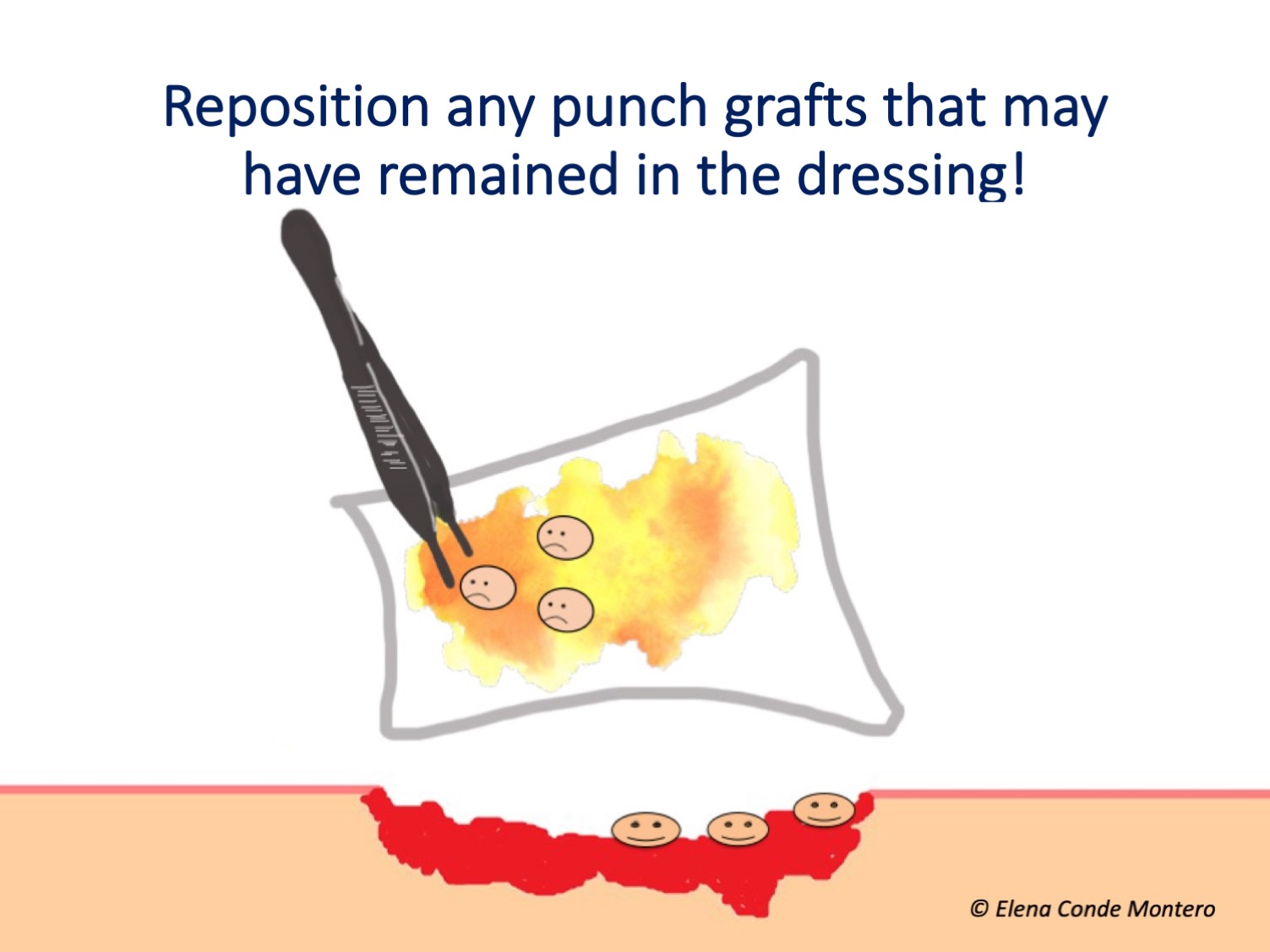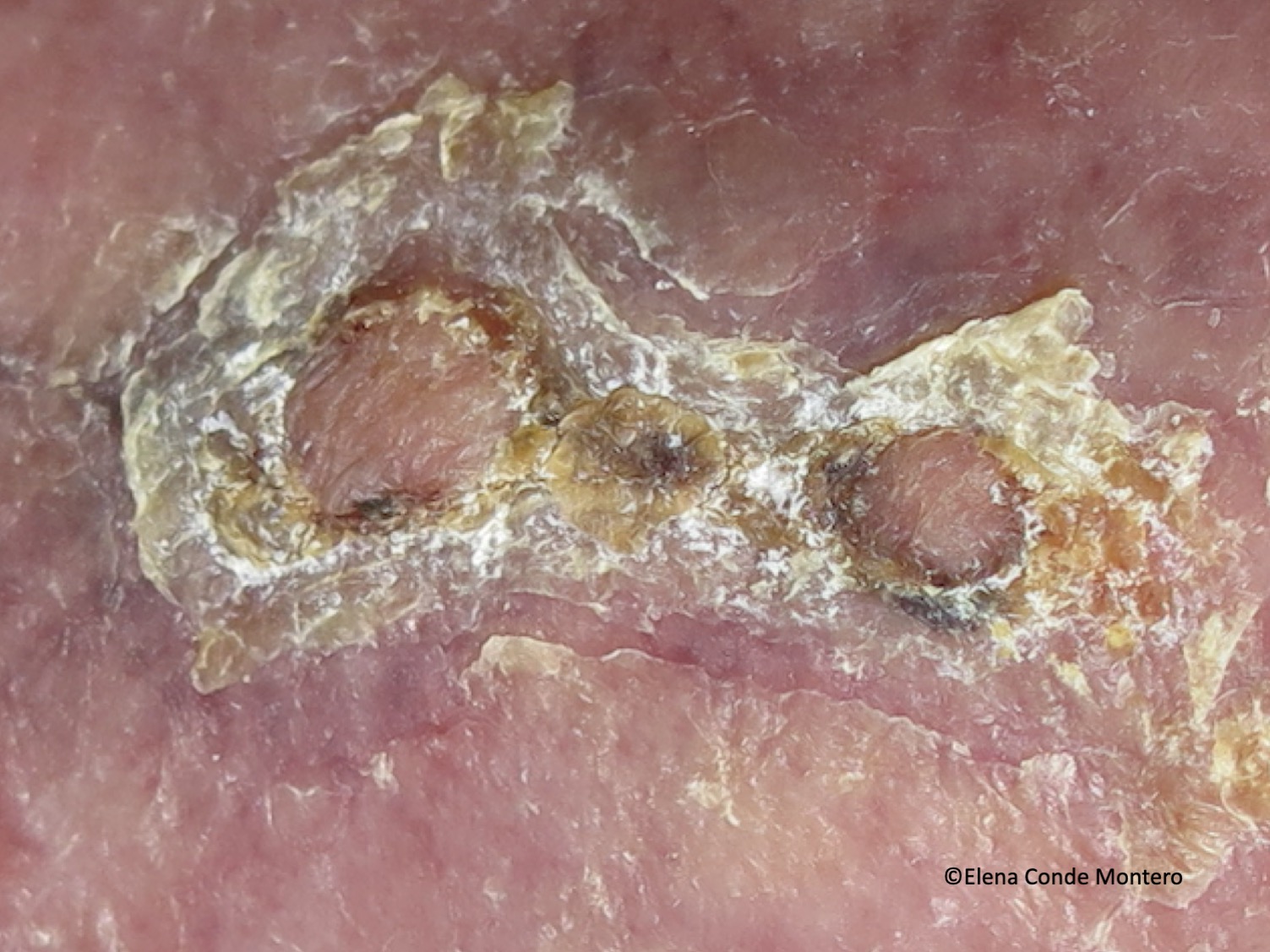The truth is that there are few written rules about punch grafting… In fact, it is difficult to find scientific publications with the most relevant practical tricks to succeed with this technique… To make up for this deficit, punch grafting is the star topic of this blog, but I have never talked in detail about these two essential points. Both “repositioning the grafts” and “not removing the scabs” are in line with the recommendations “do not touch” and “maintain the pro-healing microenvironment” that I always talk about. Let’s understand the reason for these two rules:)
Replace the grafts that have remained in the dressing!
It is not uncommon to find a punch graft in the dressing when the dressing is removed.
Several situations can occur:
- Absence of attachment: grafts in which no new vessels have formed to nourish them from the wound bed remain yellowish and swollen due to imbibition (due to the nutrition that has reached them through contact with the wound exudate). This usually occurs if the wound bed is not optimal or if there is not adequate local fixation and rest during the first 3-4 days.
- Pulling out: the grafts have taken hold, they have a pinkish-bluish colour, but we have “pulled them out” when removing the dressing.
- Detached epidermis: the grafts are adhered to the bed, pink, shiny, but their most superficial layer (transparent sheets of keratinocytes) have stuck to the dressing.
What is the best dressing to prevent the grafts from detaching? No comparative studies have been done, but our experience is good with the use of interphases or alginate fibre sheets directly on the wound (which, if it is very adhered, should be moistened before removal).
How do we recover and reposition them? We will use tweezers to separate them from the dressing and we will use the tip of a scalpel or needle to spread them out again on the wound bed.
What if we are not sure which side corresponds to the dermis and the epidermis? A clue to differentiate between them is that the dermis is shinier. However, even if we do not know which side is which, and we place them the other way round, this will also favour healing.
Should we recover the grafts even if there is a lot of exudate in the dressing? Yes, always, although sometimes it is not easy to find them 😉

Do not remove scabs!
As in acute wounds with a good evolution, in grafted wounds, scabs will form in parallel to epithelialisation. These scabs, consisting predominantly of dehydrated layers of cellular debris and exudate, act as a protective barrier to maintain a healing-promoting microenvironment. In fact, to prevent excess moisture in the grafted wound and encourage these scabs to form, we usually apply zinc oxide solution in combination with alginate fibre sheets (see post “Why do we use topical zinc on wounds and perilesional skin?” and “Why do we use so many alginate fibre sheets in our wound practice?”
Scabs should only be removed if they fluctuate, if purulent exudate comes out on pressure or if there are other signs of infection. They will fall off when they are no longer necessary… At that time, we can help them to fall off by moisturising them, for example with pure petroleum jelly 😉

Also available in: Español (Spanish)






